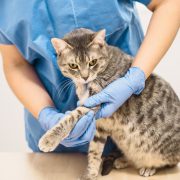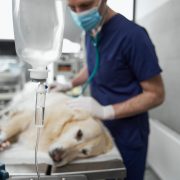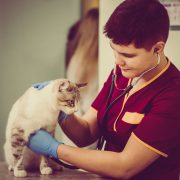Infection with SARS-COV2 in animals
Infection with SARS-COV2 in animals
OiE (2020) Infection with SARS-COV2 in animals [online] Added 17 July 2020 The OiE have produced a technical factsheet which provides a brief summary of the current (June 2020) knowledge about SARS-CoV-2 infection in animals. It includes sections on aetiology, epidemiology, diagnosis, and methods of prevention and control. It also includes this table summarising current knowledge about infection in animals.
Available at https://www.oie.int/fileadmin/Home/MM/A_Factsheet_SARS-CoV-2__1_.pdf [Accessed 17 July 2020]
| SPECIES | TYPE OF INFECTION | SUSCEPTIBILITY | CLINICAL SIGNS | TRANSMISSION |
|---|---|---|---|---|
| Pigs | Experimental | None | No | No |
| Poultry (chickens, ducks and turkeys) | Experimental | None | No | No |
| Dogs | Natural and experimental | Low | No (possible some cases) | No |
| Cats (domestic) | Natural and experimental | High | Yes (none to very mild in some cases) | Yes, between cats |
| Tigers and lions | Natural | High | Yes | Yes, between animals |
| Ferrets | Experimental | High | No (mild in some cases) | Yes, between ferrets |
| Minks (American minks, Neovison vison) | Natural | High | Yes | Yes, between minks and suggested from minks to humans |
| Egyptian fruit bats (Rousettus aegyptiacus) | Experimental | High | No | Yes, between fruit bats |
| Golden Syrian Hamsters | Experimental | High | Yes (none to very mild in some cases) | Yes, between hamsters |
| Macaques (Macaca fascicularis and Macaca mulatta) | Experimental | High | Yes | Yes |







Leave a Reply
Want to join the discussion?Feel free to contribute!